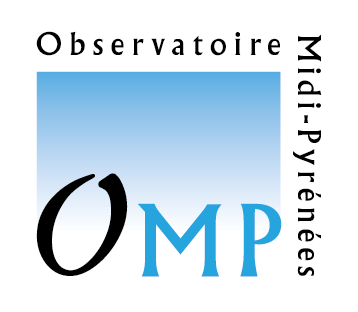The co-existence of hot and cold gas in debris discs
Résumé
Context. Debris discs have often been described as gas-poor discs as the gas-to-dust ratio is expected to be considerably lower than in primordial, protoplanetary discs. However, recent observations have confirmed the presence of a non-negligible amount of cold gas in the circumstellar (CS) debris discs around young main-sequence stars. This cold gas has been suggested to be related to the outgassing of planetesimals and cometary-like objects.
Aims: The goal of this paper is to investigate the presence of hot gas in the immediate surroundings of the cold-gas-bearing debris-disc central stars.
Methods: High-resolution optical spectra of all currently known cold-gas-bearing debris-disc systems, with the exception of β Pic and Fomalhaut, have been obtained from La Palma (Spain), La Silla (Chile), and La Luz (Mexico) observatories. To verify the presence of hot gas around the sample of stars, we have analysed the Ca II H&K and the Na I D lines searching for non-photospheric absorptions of CS origin, usually attributed to cometary-like activity.
Results: Narrow, stable Ca II and/or Na I absorption features have been detected superimposed to the photospheric lines in 10 out of the 15 observed cold-gas-bearing debris-disc stars. Features are found at the radial velocity of the stars, or slightly blue- or red-shifted, and/or at the velocity of the local interstellar medium (ISM). Some stars also present transient variable events or absorptions extended towards red wavelengths (red wings). These are the first detections of such Ca II features in 7 out of the 15 observed stars. Although an ISM origin cannot categorically be excluded, the results suggest that the stable and variable absorptions arise from relatively hot gas located in the CS close-in environment of the stars. This hot gas is detected in at least 80%, of edge-on cold-gas-bearing debris discs, while in only 10% of the discs seen close to face-on. We interpret this result as a geometrical effect, and suggest that the non-detection of hot gas absorptions in some face-on systems is due to the disc inclination and likely not to the absence of the hot-gas component. This gas is likely released in physical processes related in some way to the evaporation of exocomets, evaporation of dust grains, or grain-grain collisions close to the central star. The reduced spectra are only available at the CDS (ascii files) and at the FEROS archive (FITS files) via anonymous ftp to http://cdsarc.u-strasbg.fr (http://130.79.128.5) or via http://cdsarc.u-strasbg.fr/viz-bin/qcat?J/A+A/614/A3
Aims: The goal of this paper is to investigate the presence of hot gas in the immediate surroundings of the cold-gas-bearing debris-disc central stars.
Methods: High-resolution optical spectra of all currently known cold-gas-bearing debris-disc systems, with the exception of β Pic and Fomalhaut, have been obtained from La Palma (Spain), La Silla (Chile), and La Luz (Mexico) observatories. To verify the presence of hot gas around the sample of stars, we have analysed the Ca II H&K and the Na I D lines searching for non-photospheric absorptions of CS origin, usually attributed to cometary-like activity.
Results: Narrow, stable Ca II and/or Na I absorption features have been detected superimposed to the photospheric lines in 10 out of the 15 observed cold-gas-bearing debris-disc stars. Features are found at the radial velocity of the stars, or slightly blue- or red-shifted, and/or at the velocity of the local interstellar medium (ISM). Some stars also present transient variable events or absorptions extended towards red wavelengths (red wings). These are the first detections of such Ca II features in 7 out of the 15 observed stars. Although an ISM origin cannot categorically be excluded, the results suggest that the stable and variable absorptions arise from relatively hot gas located in the CS close-in environment of the stars. This hot gas is detected in at least 80%, of edge-on cold-gas-bearing debris discs, while in only 10% of the discs seen close to face-on. We interpret this result as a geometrical effect, and suggest that the non-detection of hot gas absorptions in some face-on systems is due to the disc inclination and likely not to the absence of the hot-gas component. This gas is likely released in physical processes related in some way to the evaporation of exocomets, evaporation of dust grains, or grain-grain collisions close to the central star. The reduced spectra are only available at the CDS (ascii files) and at the FEROS archive (FITS files) via anonymous ftp to http://cdsarc.u-strasbg.fr (http://130.79.128.5) or via http://cdsarc.u-strasbg.fr/viz-bin/qcat?J/A+A/614/A3
Origine : Fichiers éditeurs autorisés sur une archive ouverte

